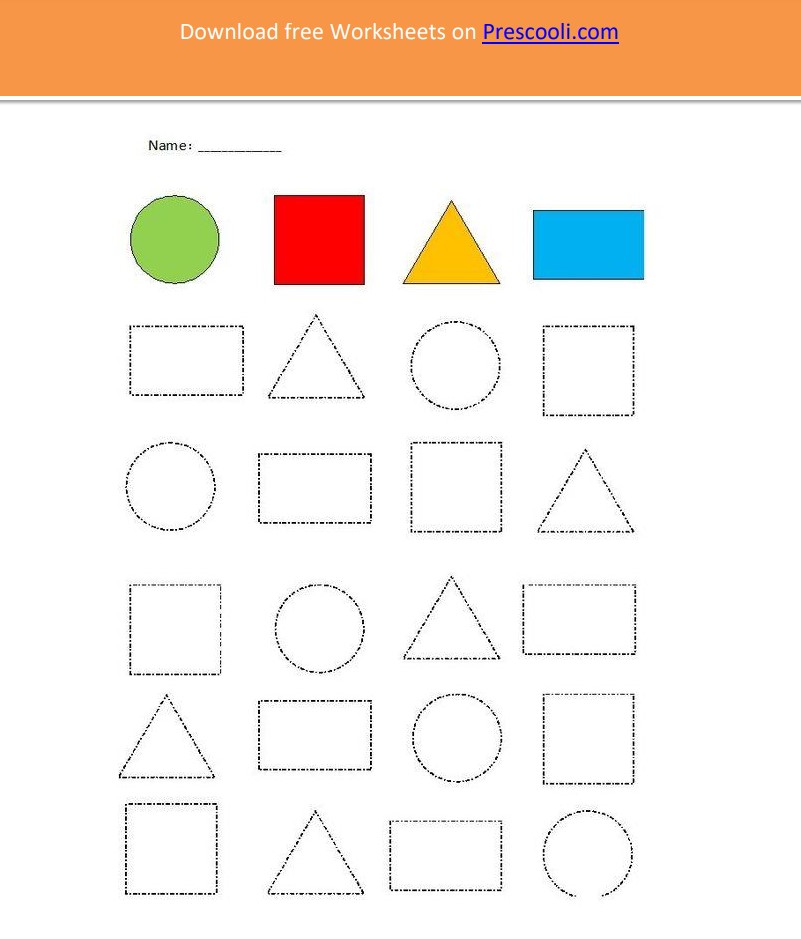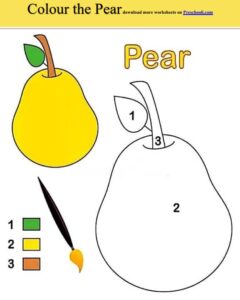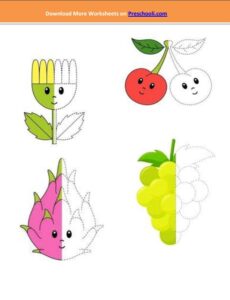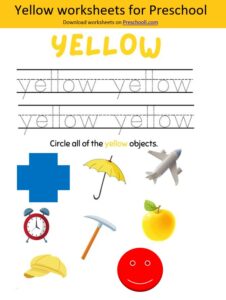Exploring Elementary Geometry with Fun and Effective Color Shapes Worksheet for Kids
Geometry is an intricate part of your child’s academic development. Teaching geometric shapes to children, especially preschoolers, involves more than just identifying the differences between a circle and a square. It’s about integrating learning into play and ensuring that the foundations laid are firm and interactive. Color shapes worksheets are one of the most effective tools to instill the concept as they combine interactive learning with a fun challenge.
If you’re a preschool teacher, parent, homeschooling enthusiast, or anyone with young learners around, it’s time to explore the power of color shapes worksheets in making geometric learning both enjoyable and effective.
Understanding the Importance of Teaching Geometric Shapes
Before we deep-dive into the fun activities, it is important to comprehend why teaching geometric shapes from an early age is crucial for a child’s cognitive development. Geometry is not just about angles and measurements; it is an essential component of spatial awareness and problem-solving skills.
For preschoolers, learning geometric shapes helps in:
- Understanding the world around them by recognizing shapes in everyday objects.
- Developing pre-math skills, which serve as a strong foundation for later mathematical concepts.
- Enhancing spatial reasoning, a skill required in fields like architecture, engineering, and art.
- Building the groundwork for understanding more complex geometry concepts in higher grades.
By introducing shapes in various colors and sizes, children learn to differentiate and understand their properties, which kickstarts their logical thinking and prepares them for more advanced learning.
The Fun Behind Learning Shapes and Colors
Learning shapes and colors should never be monotonous. It should be an engaging and collective experience. When you associate colors with shapes, you add another layer to learning—one that speaks to a child’s natural inclination for recognizing and appreciating vibrant visuals.
Picture this: a red circle, a blue square, a yellow triangle—each color depicting a different attribute. For a preschooler, this makes the distinct geometric shapes easily memorable, as they can not only name but also match these shapes and colors during various activities
Designing Effective Color Shapes Worksheet
The key to creating effective color shapes worksheets lies in their design. The activities have to be clear, the instructions simple, and the goals achievable. Here’s how you can design a worksheet that is both engaging and educational:
- Include Variety: A mix of matching, tracing, and coloring activities ensures that different learning styles are catered to. Some children learn best through touch and physical interaction, while others are more inclined to visual learning. A variety of activities makes sure you’re addressing every learning penchant.
- Keep it Age-Appropriate: Your worksheet should be tailored to the age group’s capabilities. Younger children might start with simple line tracing around shapes, while older ones could handle more intricate tasks like identifying congruent shapes or symmetry within shapes.
- Incorporate Fun Themes: A holiday season, a space adventure, or an animal safari—themed worksheets add a dash of excitement and make the learning more contextual and memorable.
- Provide Clear Instructions: The instructions should be a combination of visual cues (illustrated examples) and simple language. If an adult needs to be present, the instructions should be easily decodable without prior explanation so that the task can be self-directed.
Benefits of Using Color Shapes Worksheet
Engaging children with color shapes worksheets yields numerous advantages that extend beyond just geometry concepts:
- Improves Concentration: By focusing on the task at hand, children learn to concentrate and stay engaged for longer durations.
- Develops Fine Motor Skills: Tracing shapes and coloring within the lines are great exercises for developing fine motor skills that are crucial for writing and various other abilities.
- Encourages Creativity: When you add the freedom of color, children can express their creativity within the set boundaries, and this creative outlet is invaluable to their holistic development.
- Teaches Attention to Detail: To correctly identify shapes and colors in an assignment, children must exercise their ability to pay attention to fine details.
- Instills a Sense of Achievement: Finishing a worksheet, whether it’s through matching, tracing, or coloring, brings about a sense of accomplishment and motivates children to engage more with learning tasks.
Sample Color Shapes Worksheet Activities
To give you a head start on designing your own color shape worksheets, here are some sample activities that have proven to be hits among preschoolers:
“Match the Shape and Color”
Provide a series of colored shapes on one side of the worksheet, and an assortment of shapes in different colors on the other. The child’s task is to connect the shape with its corresponding color, enhancing their ability to match patterns and differentiate between colors and shapes.
“Trace the Lines and Color In”
This dual-task activity involves tracing the outline of geometric shapes, which is a great precursor to writing skills, and then coloring the shape in, offering a two-in-one exercise that’s both educational and enjoyable.
“What’s Missing?”
Present a sequence of shapes or colors, suddenly hiding one element behind a “clue” box. The child must identify the missing piece, reinforcing the memory of associations and training the eye to follow a pattern
“Design Your Toy”
Here, shapes become tools for creativity. Different geometric shapes are provided, and the child gets to create their own toy or object by arranging and coloring these shapes, not only learning but also fostering imaginative play.
Implementing Color Shapes Worksheet in Various Settings
These worksheets can be used in a variety of settings, each contributing to the learning process differently:
In the Classroom
For preschool teachers, these worksheets can be used as part of structured lessons or as fillers between activities. They’re an excellent way to introduce a new concept or to reinforce learning on days when children might need a bit more attention.
At Home
For parents, these worksheets serve as great tools for bonding over educational activities. They not only give children more opportunities to learn beyond the classroom but also allow for parents to monitor and engage in their child’s learning in an organic and non-pressure-filled environment.
In Homeschooling
These worksheets can be integrated into homeschooling curriculums, serving as checkpoints for geometric lessons or as part of a series of activities related to the comprehensive understanding of shapes, colors, and other related concepts.
In Group Settings
In settings with multiple children, such as daycare or playgroups, these worksheets promote teamwork and camaraderie. Children can discuss and collaborate on completing the tasks, which hones their social skills alongside academic ones.
Conclusion
Color shapes worksheets are more than just pieces of paper with activities on them. They are tools that hold the potential to make learning a multisensory, interactive, and enjoyable experience. By transforming geometric learning into a fun venture, you’re not only preparing children for mathematical journeys but also fostering a lifelong love for learning itself. For educators and parents, these worksheets are windows of opportunity to sculpt inquisitive minds and to witness, firsthand, the transformation of knowledge into empowerment.
As you explore the creation and implementation of these worksheets, remember one thing—each shape, each color, and each line drawn is a step towards building a foundation that’s strong, durable, and vibrant, much like the world that these young learners are about to explore.
Join our Facebook Group



